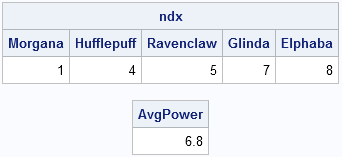
I have blogged about three different SAS/IML techniques that iterate over categories and process the observations in each category. The three techniques are as follows: Use a WHERE clause on the READ statement to read only the observations in the ith category. This is described in the article "BY-group processing























